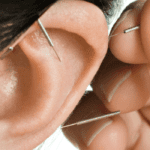Musculoskeletal pain is something many of us have experienced at one point in our lives. In fact, according to the Centers for Disease Control and Prevention, 39% of adults experienced back pain, 36.5% felt lower limb pain, and 30.7% suffered upper limb pain in 2019 alone. These numbers clearly show why many constantly seek ways to alleviate muscle and joint pains. Many resorted to taking pain meds, which, unfortunately, may have some adverse side effects.
Fortunately, there is another effective option with no known side effects: chiropractic therapy. It has been known to treat and alleviate all sorts of body pains, with many attesting to its success. American Chiropractic Association said that chiropractors treat about 35 million annually, giving you more than enough reasons why you should check it out yourself if you’re having back, neck, or joint problems.
Here are things to know about it and what you should expect before, during, and after a chiropractic treatment.
What Is Chiropractic Adjustment?
Chiropractic adjustments are procedures done by trained specialists that manipulate the body’s alignment and blood flow to improve the body’s function. The specialist (or chiropractor) uses their hands or small instruments to apply pressure to the affected area in your body, typically the joints and the spine, to help alleviate pain. One of the many benefits of chiropractic care is that it can treat many conditions related to your nervous and musculoskeletal system without relying on invasive procedures and medications.
The cost of chiropractic treatments varies depending on where you live, your reason for seeking care, your healthcare provider, and your treatment plan. Fortunately, most health insurance companies cover chiropractic care. Check with your provider for more information.
What Do Chiropractors Treat?
Chiropractors use chiropractic therapy to treat the following conditions:
Sprains and Strains
Sprains are caused by overstretched or torn ligaments, while strains tear muscles and tendons. Nearly three-quarters of adults experience strains and sprains due to lifting excessive weight, engaging in intense sports, or improper bending and twisting.
Everyday Wear and Tear
Your day-to-day activities with repetitive motions can wear down your joints over time, causing injuries and conditions like carpal tunnel syndrome and tennis elbow. Chiropractic therapy is the best option to relieve pain and strain due to repetitive activities.
Cervicogenic Headaches
Cervicogenic headaches are caused by neck pain. Many describe it as a discomfort behind the head or eyes, often confused for migraines.
Myofascial Pain
This chronic pain is caused by excessive muscle use that puts intense pressure on sensitive areas of your muscles called trigger points. They are similar to a knot in your muscles and cause severe pain.
Degenerative Disc Disease
Degenerative disc disease is due to the wear and tear of your spinal discs. They are rubbery cushions that sit between your vertebrae, acting as shock absorbers that allow you to move comfortably.
Disc degeneration is expected as we begin to age. When your spinal discs get worn out, the bones rub together and lead to pain or other issues like scoliosis, herniated discs, and spinal stenosis.
Spinal Osteoarthritis
Damage to the spine and the surrounding bones and joints leads to spinal osteoarthritis. It is a common form of arthritis caused by aging.
Whiplash
A forceful and rapid back-and-forth neck movement like a cracking whip will result in a whiplash injury. The most common causes of whiplash injuries are rear-ending accidents, sports accidents, physical abuse, and other traumas.
Sciatica
Sciatica occurs when the sciatic nerve is irritated or compressed. It causes moderate to severe pain that shoots down the legs, similar to an electric shock.
Herniated Disc
This condition is most common in the neck or lower back. It can cause pain if the inner ring or matter presses on sensitive nerve roots.
Visits To The Chiropractor: What To Expect
Now that you know why you may need chiropractic treatment, you’ll need to prepare for your first chiropractic session. Here are things you can expect in its different stages:
Before the Treatment
During the initial visit, your chiropractor will assess your symptoms and medical history. This will help them evaluate your condition and create an effective treatment plan customized to your condition. Your chiropractor will test your blood pressure, reflexes, pulse, respiration, range of motion, muscle tone, and more. Depending on their assessment, they may also require additional tests, like X-ray and MRI scans.
Your chiropractor will also need to know about any pre-existing medical condition and your family’s medical history before recommending chiropractic treatment. Once they diagnose your condition, they will discuss individual treatment plans and how long you’ll need chiropractic treatments.
Depending on your condition, you may experience treatment on the first visit. Regardless, you’ll need to help your body prepare for the treatment it’s about to receive.
Here are some tips:
- Try to relax.
- Drink enough water. It helps your muscles adapt to the changes they’re about to experience.
- Eat a light, healthy meal.
- Loosen your spine by walking a short distance.
- Tell your chiropractor if you feel any pain before the treatment begins.
During The Treatment
Your chiropractor will put you in different positions depending on the treatment you need. Most of the time, you’ll be facing down. You may also hear popping and cracking sounds. Don’t be alarmed; your joints are releasing the air trapped in them from stretching or moving.
After The Treatment
Most patients experience immediate relief after a chiropractic adjustment. Your chiropractor’s adjustments are helping your blood circulation improve and your muscles relax. You’ll also feel improvements in your range of motion and a slight tenderness that will eventually fade.
When To Stop
Every few weeks, your chiropractor should re-evaluate your chiropractic treatment plan to determine if you want to continue, modify, discontinue, or use another method.
You should discontinue chiropractic treatments when:
- You no longer experience symptoms.
- You feel more pain.
- You don’t feel any improvement after two to four weeks of treatment.
Mild discomfort is normal for one to two days after your treatment. Notify your chiropractor if you feel pain for more than a few days.
Chiropractic Treatment: Aftercare
Post-chiropractic care is essential, even when you’re already feeling better. Remember to:
Drink Up
Water helps hydrate and flush out the toxins and other waste from your body and helps your nervous system relax. It also helps keep the discs between your vertebrae healthy.
Move and Exercise
Don’t sit for too long; take a walk or ride a bike to help keep the adjustments from reverting, speed up healing, and boost after-adjustment effects.
However, do it sparingly. Avoid engaging in strenuous activities or lifting heavy objects. Instead, try yoga, swimming, and Pilates. If you go to the chiropractor due to an injury, your chiropractor can teach you exercises and tips to help with your pain.
Rest
Rest is just as important as the treatment itself. Take a break from your daily tasks if you can, and get enough rest and sleep to help your body heal and recover.
Key Takeaway
Chiropractic adjustments are an excellent alternative to taking pain medications. Chiropractors use it to treat various conditions like strains and sprains, osteoarthritis, and normal body wear and tear.
Visits to the chiropractor for treatment are relatively simple. Your first visit will begin with assessments and examinations that will help your chiropractor develop a treatment plan. Then you go on ahead with the adjustments. Preparation for treatments is pretty easy; remember to hydrate, perform light exercises, and rest after each one.
Start living pain-free today.
Our partner chiropractors in Vail, CO, offer chiropractic care that will alleviate your chronic pain. Call us today; we’ll gladly answer your questions and guide you to the best chiropractor in your area.








